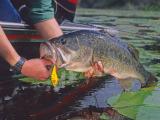Nov 10, 2003 (CIDRAP News) In an effort to ensure that sick cattle are kept out of the food supply, the Senate last week approved a measure to bar the Department of Agriculture (USDA) from approving the use of "downed" animals for human consumption.
Sen. Daniel Akaka, D-Hi., offered the measure to prevent "inhumane and improper treatment" of animals that are too sick to stand or walk. "Stronger legislation is needed to ensure that these animals do not enter our food chain," Akaka said in a statement. "My amendment prevents downed animals from being approved for consumption at our dinner tables."
Akaka's measure was an amendment to the fiscal year 2004 agricultural appropriations bill, H.R. 2673. The amendment, which was approved Nov 5 on a voice vote, bars the USDA from using fiscal 2004 funds to approve downed animals for human consumption. The House turned down a similar amendment on a 202-199 vote when it passed its version of the USDA appropriations bill, according to the Associated Press (AP). The fate of the measure will depend on negotiations in a House-Senate conference committee.
"Many of these animals are dying from infectious diseases and present a significant pathway for the spread of disease," Akaka said. He voiced particular concern about bovine spongiform encephalopathy (BSE), or mad cow disease. Eating meat products from BSE-infected cattle is believed to be the cause of variant Creutzfeldt-Jakob disease in humans.
Current USDA policies are designed to keep sick animals out of the food supply, according to Steve Cohen, a spokesman for the USDA's Food Safety and Inspection Service (FSIS). "Under no circumstances would an animal that shows clinical signs of illness be allowed to enter the food chain, whether that animal could walk or not," Cohen told CIDRAP News.
USDA veterinarians at all slaughter plants assess the condition of cattle brought to the plants, Cohen said. "If upon examination they [the vets] see any signs of illness, that animal is not allowed to go to slaughter," he said. Inspectors also check carcasses and condemn any that show signs of disease, he added.
Cohen said nonambulatory cows can be approved for food use if they show no signs of illness, which can happen with injured animals. "A lot of them are older dairy cows that have either hip or leg injuries," he explained. "Sometimes they have accidental slips in transportation, and that's why a lot of our inspection takes place in the transport vehicle itself, so that the animal doesn't suffer when being moved."
Cohen couldn't say how many nonambulatory cattle turn up at slaughter plants each year or how many are used for food. The AP report said the USDA has estimated that 130,000 downed animals are slaughtered annually.
Akaka said it's not possible to distinguish BSE from many other diseases by simple inspection. "Consequently, BSE-infected cattle can be approved for human and animal consumption," he asserted.
Will Hueston, DVM, director of the University of Minnesota's Center for Animal Health and Food Safety in St. Paul, agreed that BSE has no unique clinical signs that make it easily recognizable. Consquently, he said, there is a theoretical risk that a BSE-infected cow could end up food, though no BSE cases have been seen in the United States. "If we had BSE, an animal that [had the disease and] was unable to move because of a broken leg and showed no signs of disease, no fever or abnormal behavior, could enter the food chain," Hueston said.
He added, "I wouldn't go too far down that line, though," because the USDA's surveillance program for BSE focuses largely on downed cattle, which are among the cattle at highest risk. In fiscal year 2003 (which ended Sep 30), the agency's Animal and Plant Health Inspection Service (APHIS) tested 20,277 cattle for BSE, including 16,560 downed cattle, according to information on the agency's Web site. The carcasses of tested animals are held until the test results are in.
In BSE-affected countries, high-risk tissues, including the brain and spinal cord, are removed from all adult cattle at the time of slaughter to guard against the risk of invisible BSE cases entering the food chain, Hueston noted. The abnormal prion proteins associated with BSE have not been found in muscle tissues used as meat.
Cattle that are condemned as unfit for human consumption are sent for rendering, in which the carcass is cooked to remove water and separate fat from protein, Hueston said. The fat and protein are used in pet food, feed for animals other than cattle or other ruminants, and various other products. As a precaution against BSE, material from ruminants cannot legally be fed to ruminants.



















